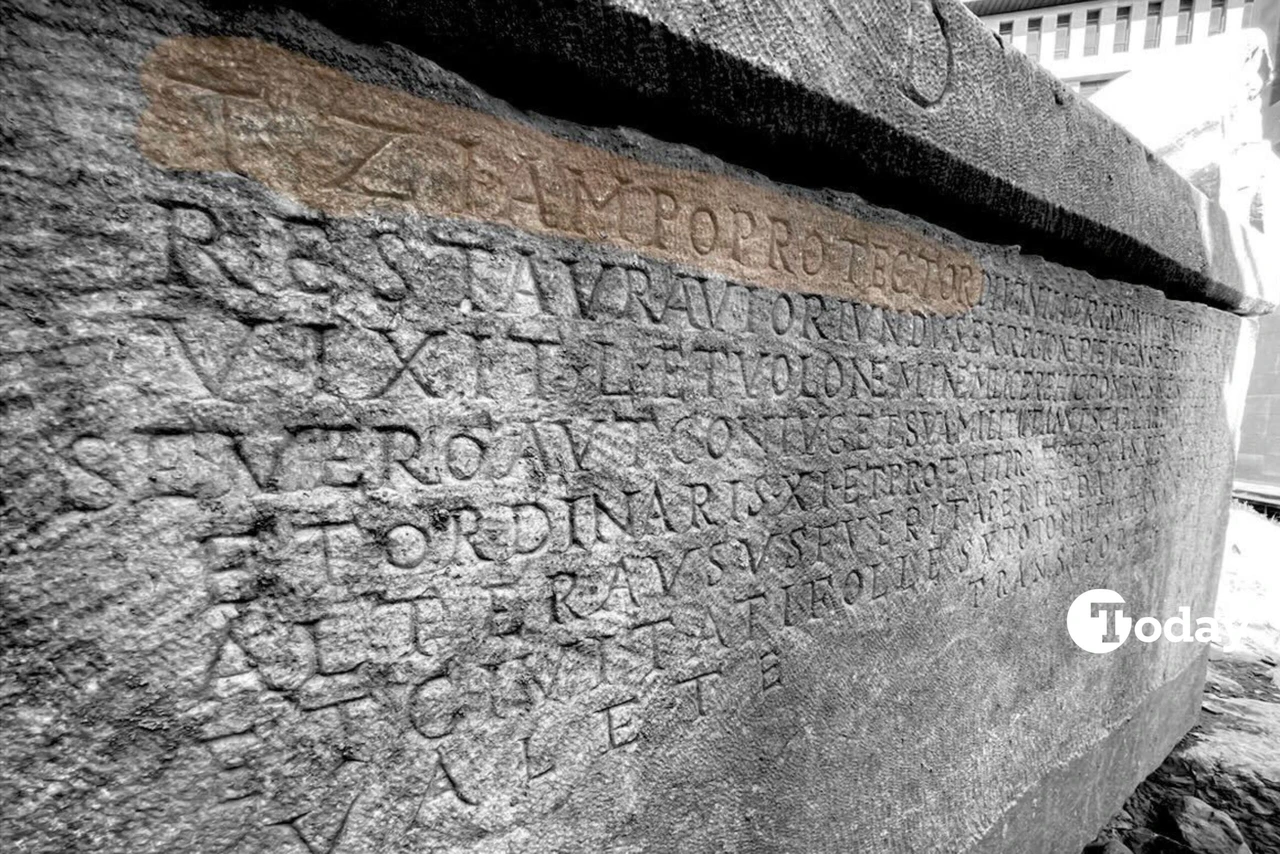Exclusive: Behind ancient curtains – Hidden actor rooms in Türkiye’s ‘Prusias ad Hypium theatre’
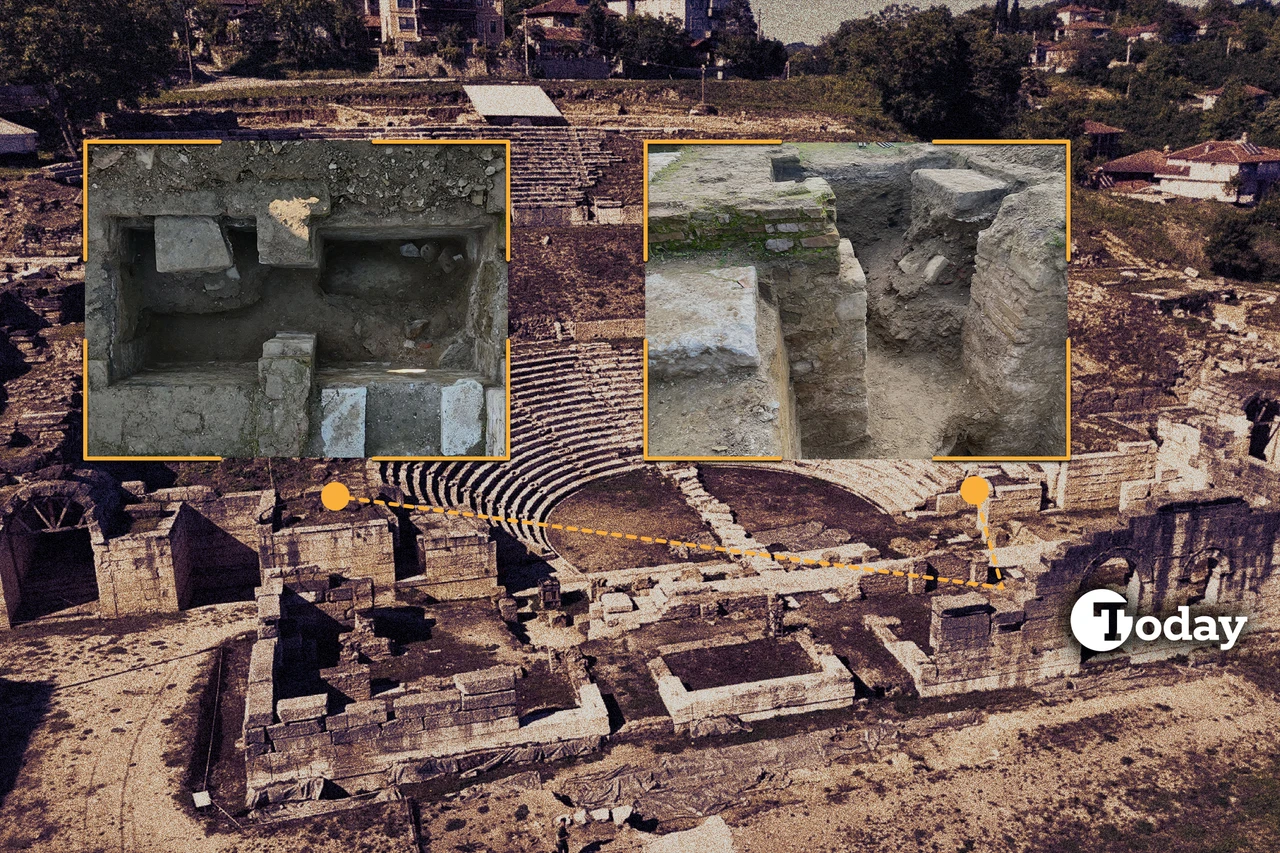 A collage of photos featuring the Roman theater and the rooms discovered in the stage building of the ancient city of Prusias ad Hypium, Duzce, Türkiye, November 9, 2024. (Photos via Koray Erdogan, Photo Collage by Mehmet Akbas/Türkiye Today)
A collage of photos featuring the Roman theater and the rooms discovered in the stage building of the ancient city of Prusias ad Hypium, Duzce, Türkiye, November 9, 2024. (Photos via Koray Erdogan, Photo Collage by Mehmet Akbas/Türkiye Today)
Ongoing excavation and restoration work at the ancient city of Prusias ad Hypium in Duzce, Türkiye, has led to the discovery of fascinating rooms within the stage building, known as the skene. These areas, thought to have been used as dressing rooms, actor lodges, and decorative storage spaces, shed new light on the theatre’s operational structure.

Prusias ad Hypium, located between Istanbul and Ankara, continues to uncover significant details about its ancient history through ongoing excavations. The city’s well-preserved theatre is a striking example of the Western Black Sea’s finest public architecture. Once part of the Roman Bithynia province, the city stretching from modern-day Kadikoy, Istanbul (ancient Chalcedon) to Bolu (ancient Claudiopolis), offering valuable insights into ancient urban planning.
The theatre, a symbol of the city‘s cultural heritage, remains largely intact beneath the earth, with significant portions of the structure still preserved, making it one of the most notable archaeological sites in the region. Excavations, under the sponsorship of Duzce Municipality and with permission from the General Directorate of Cultural Heritage and Museums, have continued for nearly seven years, unveiling important discoveries, particularly in the stage building (skene).
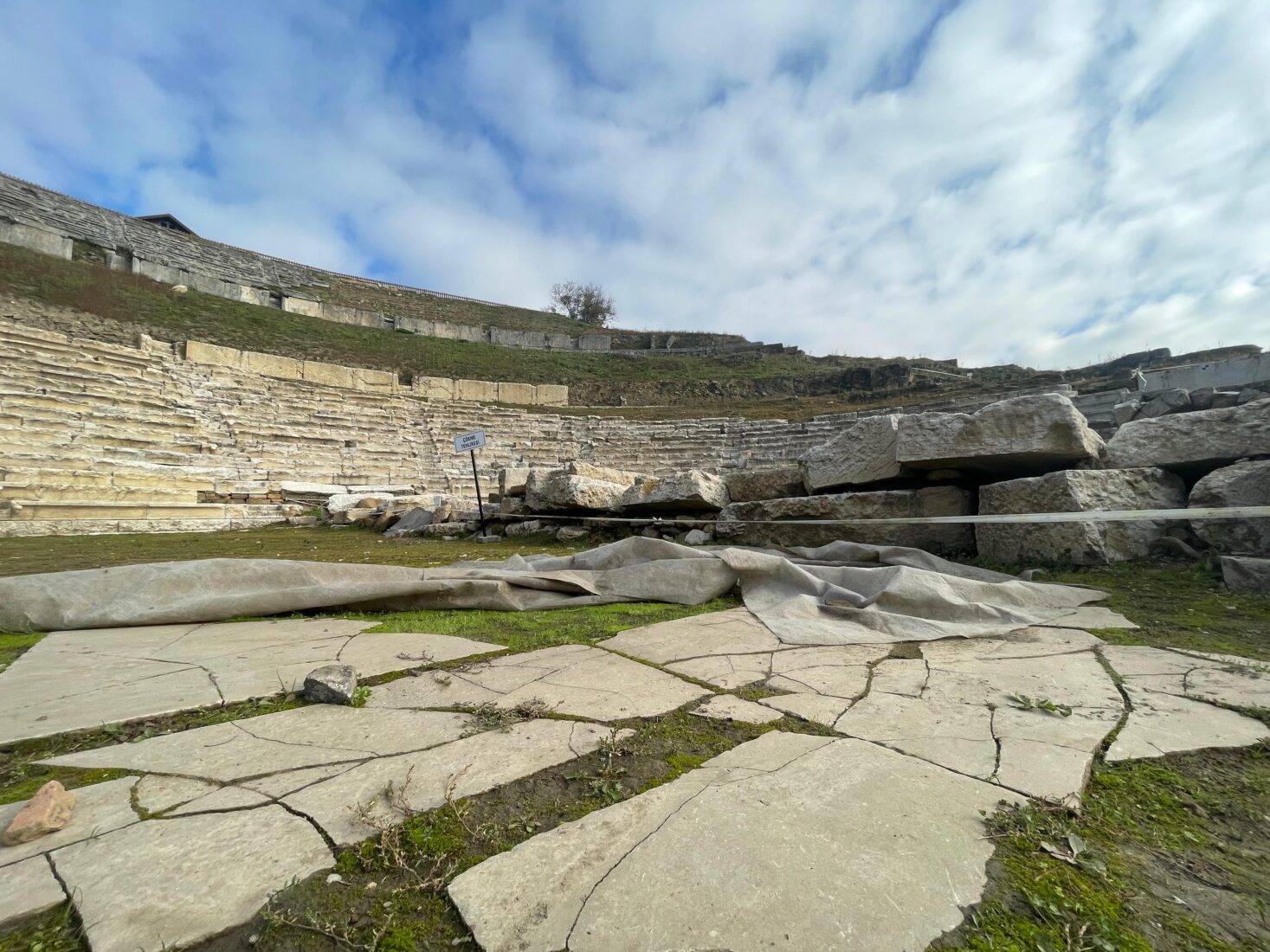
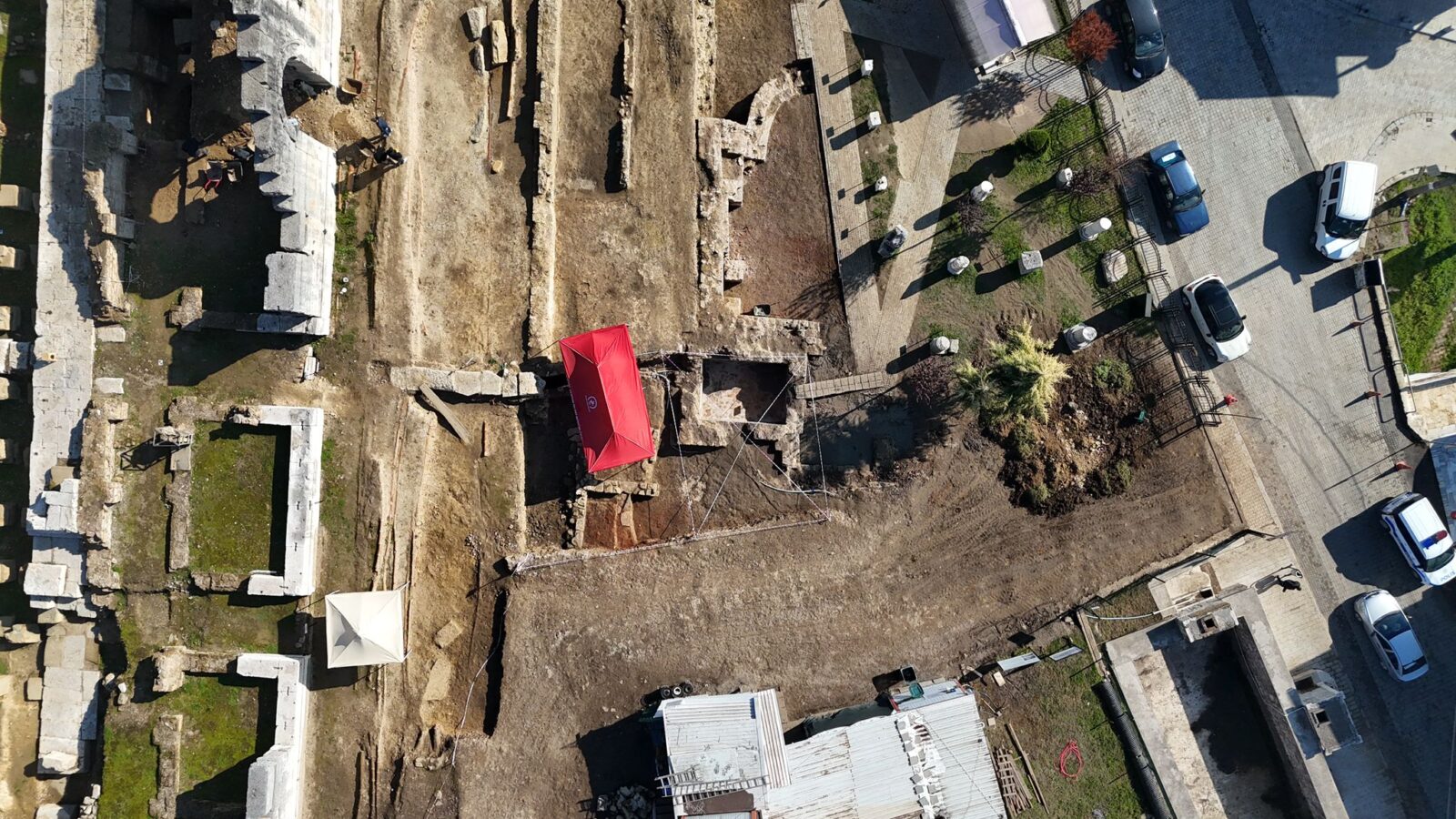
Prusias ad Hypium’s role in Bithynia
The city, which was initially a district of Heracleia Pontica (modern-day Karadeniz Ereglisi, Zonguldak), was conquered by King Prusias I in 182 B.C. and incorporated into the Kingdom of Bithynia. It was then expanded on the hill by the banks of the Hypios River (modern-day Melen Creek). The city was one of the twelve key cities that formed the Bithynian Union.
The city, which became part of the Ottoman Empire in 1323, was later renamed Konuralp after being annexed by the Ottomans.
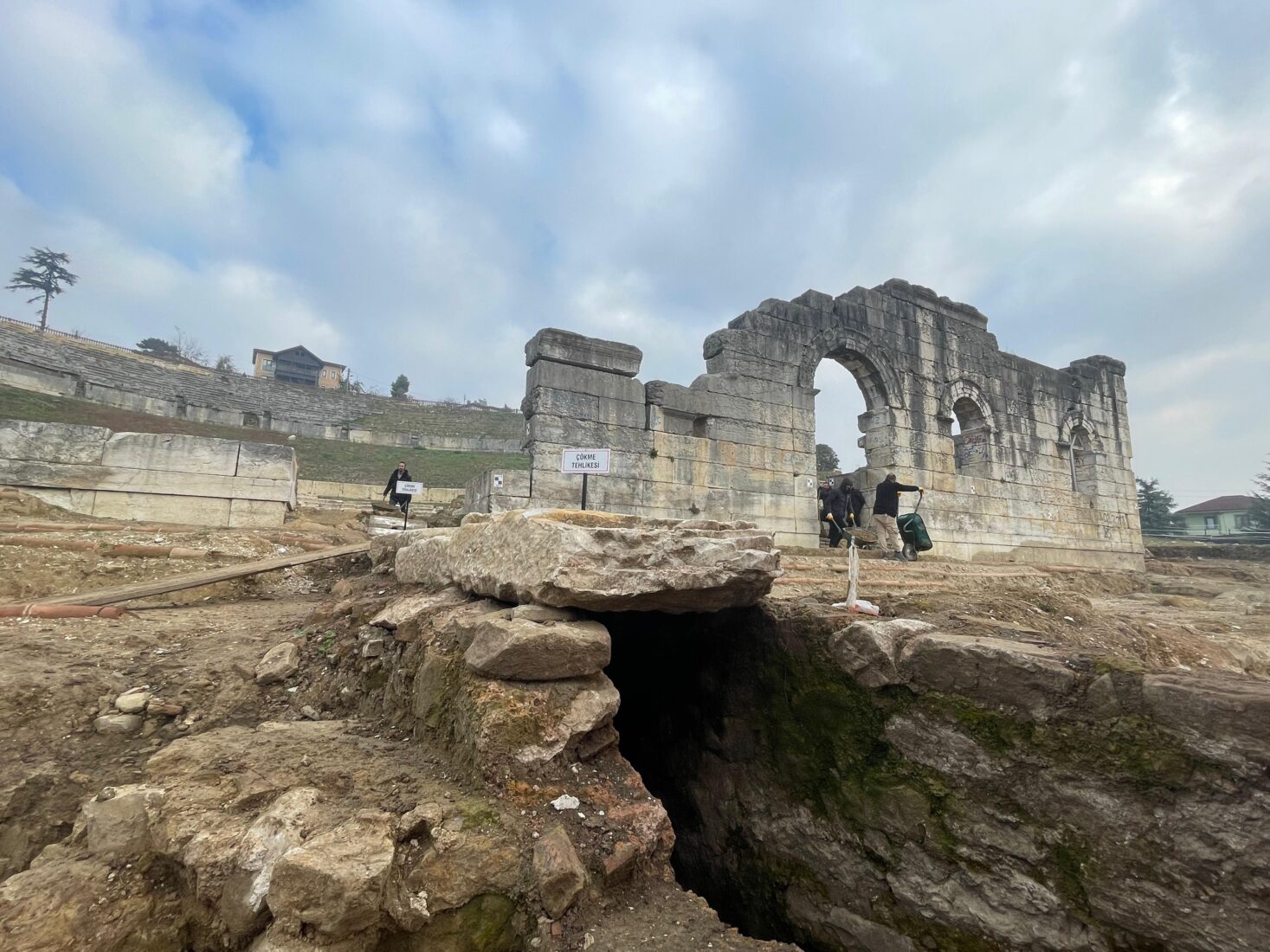
Until 2013, the theatre was locally known as “Kirk Basamaklar” (Forty Steps) due to its visible seating arrangements. Since excavations began, the site has revealed even more of its grandeur, including corridors and the western sections of the theatre, which have been extensively restored.
Not just a remarkable historical site in Bithynia, this ancient theatre is among the best-preserved examples of Roman-era public buildings in Anatolia. Despite the repurposing of its stones in other buildings over time, the theatre’s seating arrangements, the ima (lower seats), summa cavea (upper seats), and the stage structure remain remarkably intact.
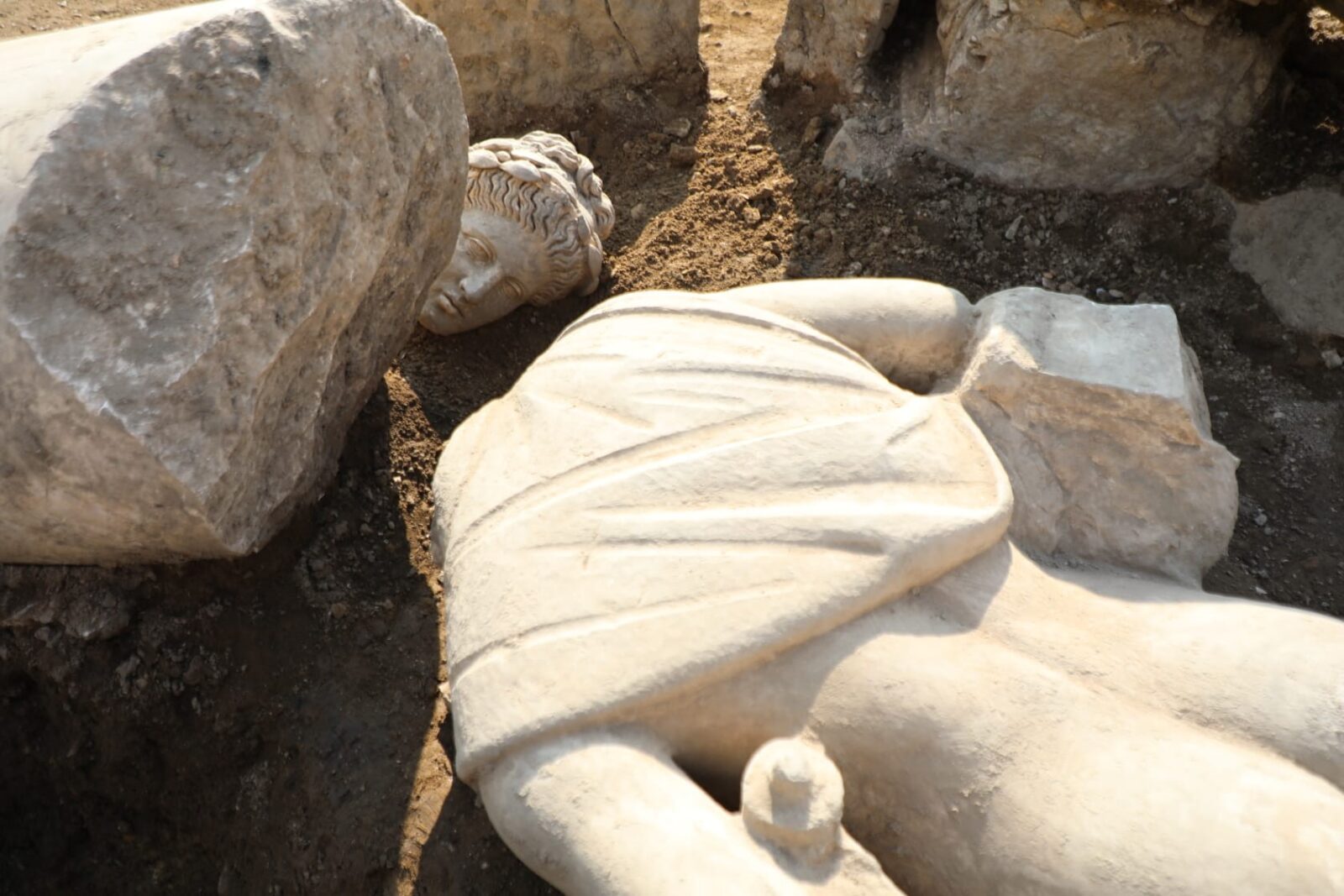
Batı Karadeniz’in Efes’i olarak adlandırılan Prusias ad Hypium Antik Kenti’nde yapılan kazı çalışmalarında Apollo heykeli çıktı. Apollo heykelini inceleyen Düzce Belediye Başkanı Dr. Faruk Özlü “Apollo heykeli ile büyük bir uygarlığın mirasını taşıdığımızı anlıyoruz” dedi.
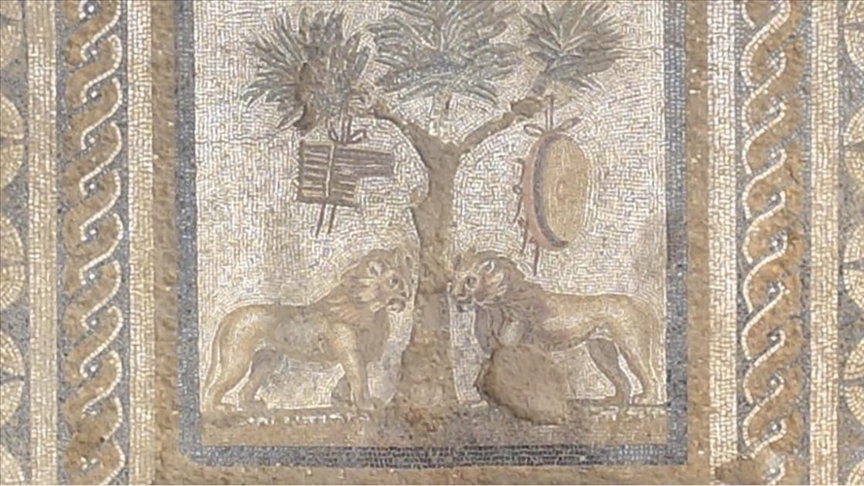
Major discoveries over last 7 years
Since 2017, ongoing archaeological work has uncovered valuable finds, enhancing our understanding of the region’s cultural heritage. Significant artifacts, such as sculptures, storage vessels, unique architectural blocks, mosaic floors, and religious structures, have been uncovered.
These findings contribute immensely to our understanding of the city’s past, especially during the Roman period.
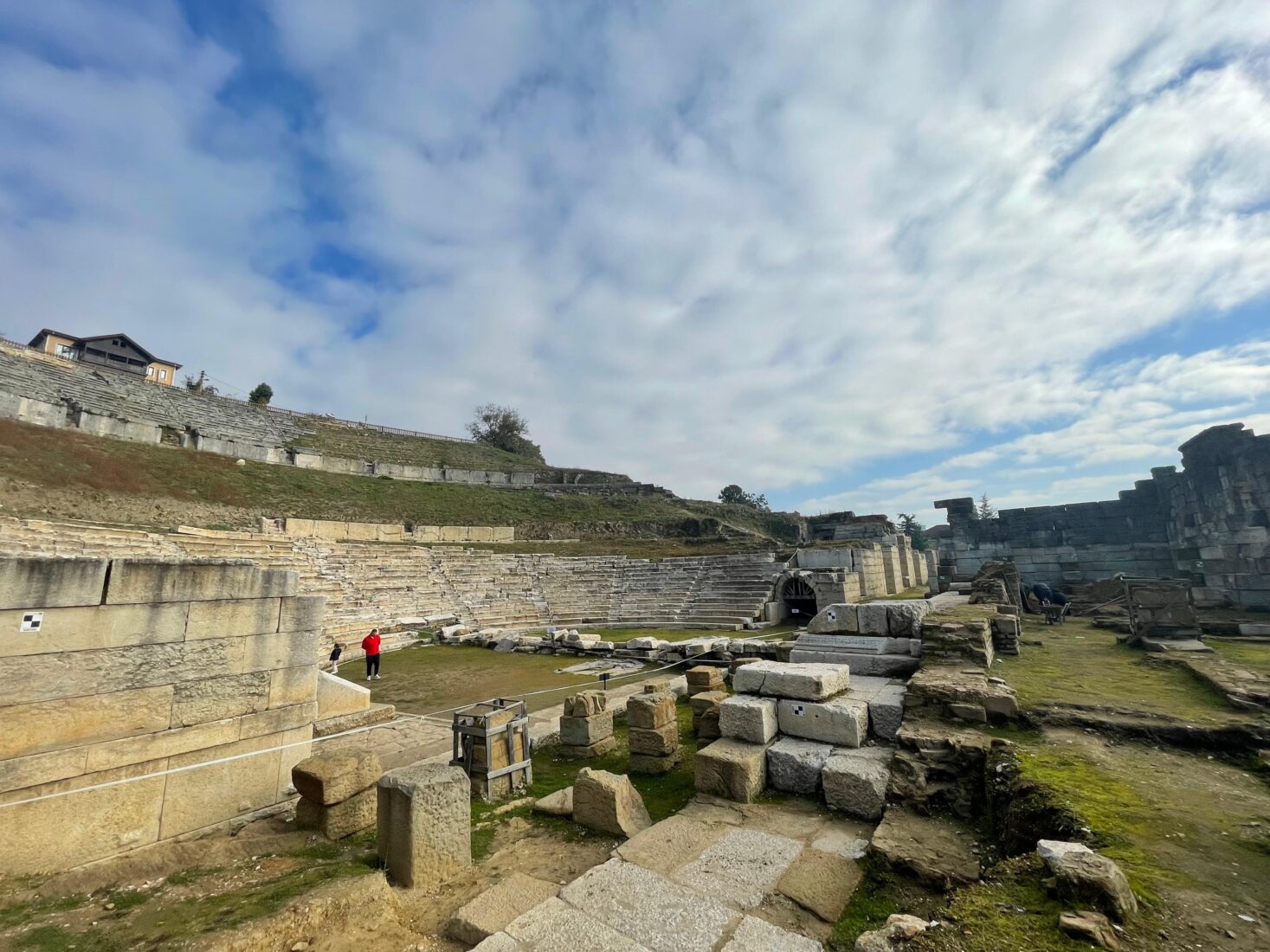
Musical performances and cultural rituals revealed
Recent excavations have provided important clues about the cultural and theatrical activities in Prusias ad Hypium. A near-complete statue of Apollo Kitharaidos, holding a kithara (a precursor to the modern guitar), suggests that musical performances were a central feature of the theatre.
In addition, a mosaic found in a room believed to be dedicated to Dionysus, the god of wine and theatre, depicts two lions beneath a tree with musical instruments hanging from its branches. This discovery provides the first concrete evidence of musical performances being held in the theatre.
The mosaic, dating to the 2nd century A.D., and the 1.9-meter-high statue of Apollo, highlight the artistic skill of the time while shedding light on the theatre’s multifaceted cultural significance.
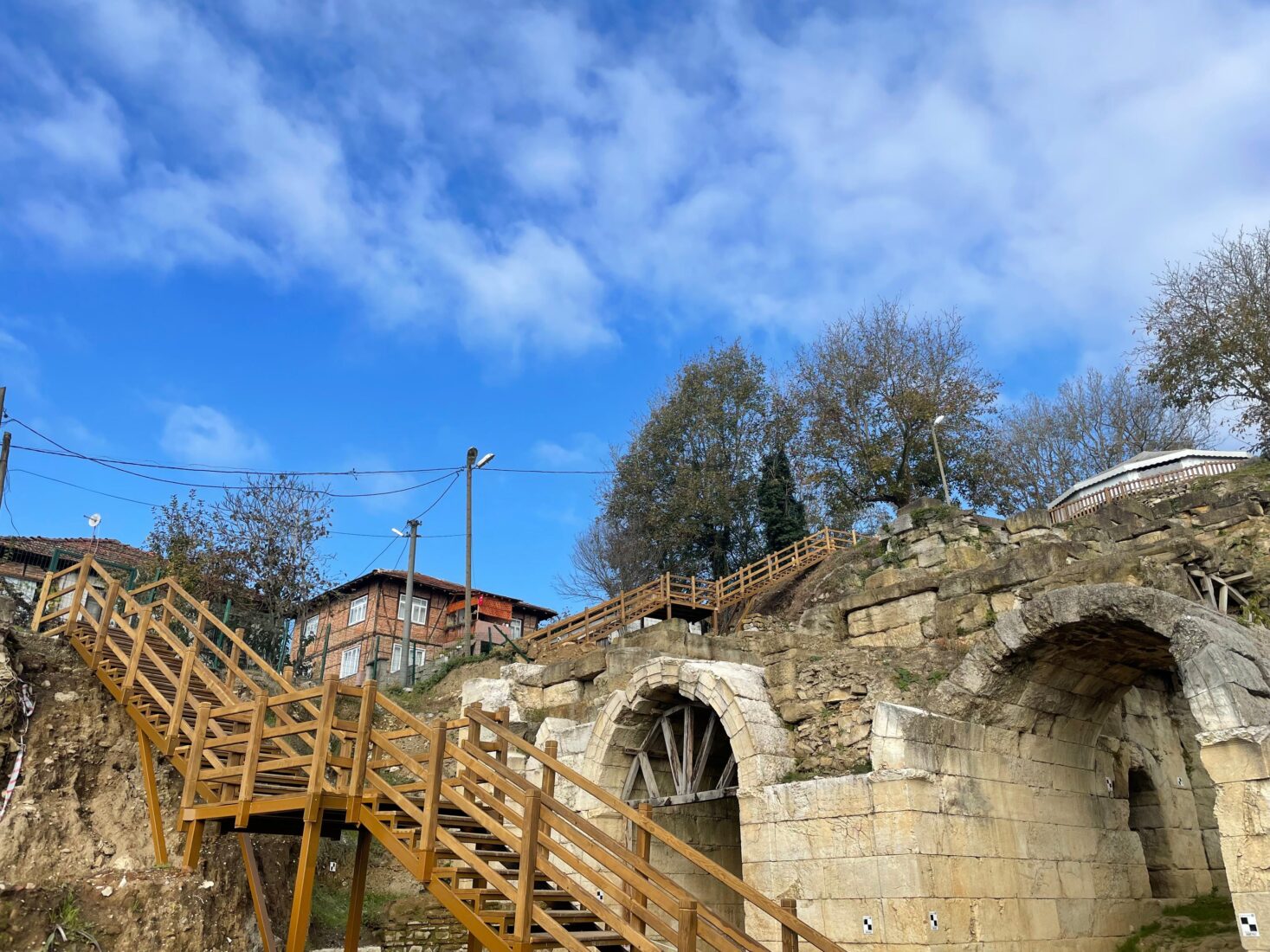
Future of Prusias ad Hypium
As restoration work continues, the Prusias ad Hypium theatre complex is set to become a major cultural and tourist destination. Plans are in place to convert the site into an archaeological park, enhancing its accessibility for tourists and further solidifying its place in the cultural history of Anatolia.
This ongoing excavation project not only contributes to our understanding of Roman-era entertainment and rituals but also underscores the importance of preserving the rich archaeological heritage of Türkiye.
